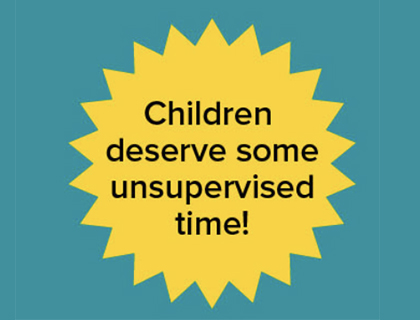Hi Readers! This photo comes to us from blogger Tarja Kelly in Australia. Those are the pages and pages of warnings that came with a Monsters U toy. The kids thought it was a book! Heck, maybe we SHOULD read all this fine print aloud to our kids as a cautionary tale of what happens when you mix childhood and legal departments. It’s Grimm. – L




33 Comments
Yeah, it’s ridiculous. If a toy is so dangerous that it needs a scroll to scare you about safety, why is the toy on the market in the first place?
The blogger’s link goes to a site selling a book about Hypohidrotic Ectodermal Dysplasia. Is there any information on the Monsters U toy?
This is ridiculous and sadly funny.
Ridiculous. In a way, I’m glad to see that such buffoonery is not only found in the United States.
Have we already forgotten HAPPY FUN BALL?!!
http://www.youtube.com/watch?v=LuyHm6gjd2k
I love (sarcasm) the booklets of instructions and safety information that come with babies toys. Really, does anyone actually read that gobbledygook?
Are the warnings in many languages? My son got a toy for Christmas that came with something similar, but it was a small section on care and maintenance and how to put the batteries in, and was in 14 different languages.
The booklet of warnings is probably less safe than the toy.
@BL, so true, hopefully they put a warning about the potential for paper cuts on the cover. So the kids were warned before they opened the booklet and exposed themselves to *danger.*
Frankly, I do love those booklets. When they translate instructions from English to Chinese, then to German, French, Portuguese and last to Spanish, the final message is so messed up that it would be really dangerous to follow them! In the unlikely case that you manage to understand them at all, that is…
The irony is that to cut through the thick, Made in China plastic that packages these toys, I’ve sliced more of my fingers and the paper warnings just soak up the blood. It’s the packaging that’s dangerous, not the toy.
Yes, I’d play with that toy, possibly even without reading the safety instructions. One tiny detail, though–what IS that toy? Is it a beaver, or some kind of monster or alien?
I like manuals in many different languages too, simply to compare and see what I can understand of the languages I don’t speak (spot the loanwords in Russian!). As a child I thought it was interesting to see the little groups of languages that were clearly related.
I’ve never seen total gibberish translations though (as far as I could understand).
So provided it’s all in English, what could it possibly all warn for?? “Do not ingest”?
My brother-in-law is an attorney. During one visit I glanced at the kiddie scooter and the tween bicycle on the front porch. The scooter platform had so many labels there was hardly any room for the non-slip tape. And to get the labels to fit, the type font was unreadable. Bike labeling is yet another suite of issues. First, the regulators have decided that ALL bicycles are classified as “kid’s toys” and as such, all “boxed” bicycles MUST be sold fully reflectorized. No more space/time for more issues.
Something the toymaker’s legal departments include to lower the risk of lawsuits, plain and simple. But any lawyer can rip through that in court…it’s all about litigation.
@BIL_attorney: “First, the regulators have decided that ALL bicycles are classified as “kid’s toys””
Being Dutch, that is VERY funny for me. My grandmothers both still peddled around at 80+, totally oblivious they were using a kid’s toy!
“and as such, all “boxed” bicycles MUST be sold fully reflectorized.”
And what is ‘fully reflectorized’ in this case? (I’m used to red reflector in the taillight, orange ones on the peddles and whitish circles on the tires.)
to Papilio,
US regulations specify reflectors on the front and rear of the bicycle, spoke mounted reflectors, and reflectors mounted on the pedals. I might be missing something. Part of the controversy is reflectors vs. lights.
A “boxed” bicycle means something that comes from the vendor as opposed to a semi-custom racing type of bicycle.
If you have a few spare hours, Google search on CPSIA and bicycle reflectors. Spokes and cabling are also affected.
“First, the regulators have decided that ALL bicycles are classified as “kid’s toys””
Fifty or sixty years ago about all the bicycles you could buy in the US really were kids’ toys.
An adult who wanted to seriously cycle had to mail-order bicycles at great expense from somewhere like France or Italy.
Those things are typically written in 15 different languages. I’ll bet the English part is only a page or two. Still, you find really stupid things on them like “Don’t stick this thing in your eye” and “Don’t mix it with your baby’s food”.
It’s all about liability. Somewhere, somehow, someone did something stupid, and sued. That’s why there are labels on car batteries “do not drink battery acid”. Why? Because of a lawsuit where someone claimed “you never told me not to drink acid, so it’s your fault! Pay!” With the label, the company can argue that the customer was warned and did it anyway.
Publicly shame people who play the lawsuit lottery.
Hi BIL_attorney, thanks for the explanation. I think I’ve seen the spoke mounted reflectors occasionally, but not on a normal bike (= upright citybike meant to get from A to B). Maybe on actual kid’s bikes, or perhaps folding bikes….? Something with smaller wheels. Could also be a bakfiets… Hmm.
Lights – white(ish) headlight, red taillight – are required here if you cycle in the dark; reflectors just aren’t enough.
@BL: Wow, so the decline was already complete 50-60 years ago! There was a time, more like 100 years ago, that cycling actually was (quite) normal in the USA (and I don’t mean racing, although that is of course also a very legitimate reason for an adult to ride a bike!). Then of course car-centrism happened…
The linked website appears to be a blog, but all that I can find is an “about” page talking about some unrelated disease.
Is no one worried about the very real danger of papercuts from that thing? Look how long the edges are!
Okay, where’s the warning label for the warnings booklet?
Do not ingest booklet.
Keep away from fire.
Edges may be sharp.
Tripping hazard.
Do not place on floor; booklet may be slippery and you could fall!
Not intended for children who can’t yet read.
Failure to read and understand these warnings may result in injury or death!
Which reminds me of my very favorite warning label:
Do not look into laser beam with remaining eye!
It’s not the toy is “unsafe”, it’s the companies way of covering their asses from litigious minded people. And there are a lot of them out there. Just waiting for the right opportunity, and company to come along. That’s the world we live in today. And the only people that truly suffer, are the children. Caught in between the ignorance and selfishness of adults. I wouldn’t be surprised to see more of this type of disclaimer in future products. And not just for children’s toys.
It’s interesting to see how many languages instructions come in. Something intended for North America might have English, Spanish and French (gotta keep the Quebecois happy!). A product with world-wide sales could have have Russian, German, one or more Scandinavian tongues, Arabic, Tagalog, Japanese, Chinese, Portuguese, etc. Presumably it’s cheaper just to print something for everyone rather than make sure the instructions with products headed for Brazil are in Portuguese.
That is just basic cover your ass legal mumbo jumbo that most companies do now.
I saw a 96-piece puzzle about the size of a restaurant placemat at the store today. In great big letters next to the company logo were the words, “CHOKING HAZARD: NOT FOR CHILDREN UNDER TEN EXCEPT UNDER SUPERVISION.”
What.
I suspect that they use the same warnings sheet for every toy. It is cheaper to have one sheet with all possible warnings in all languages then to create custom sheet for every toy. Using one sheet for everything also lowers the risk that they will forget some applicable warning.
“Wow, so the decline was already complete 50-60 years ago!”
Well, bicycles for adults became available in the US (again) starting in the 1960s. Not sure what all happened in the middle of the century. I know that in the 1940s and 1950s (and probably before that) it was widely considered dangerous for adults to engage in any vigorous exercise. The jogging thing picked up the 1960s and the mindset changed.
Emily — it’s the Scare Pig! Fear Tech’s mascot. In Monsters U Sulley kidnaps him… in Disney Infinity you get to ride him in races LOL
@Bob Davis: Yes, some are that thorough. Dutch is the 35th or so language of the world, so if even that is on/in there, then quite likely also about 34 other languages, unless it’s more specificly for the (Western) European market 🙂
@BL: “it was widely considered dangerous for adults to engage in any vigorous exercise”
That alone shows any normal bike culture was already gone, because cycling really doesn’t need to be more vigorous than walking, and was that ever considered dangerous?? (I see that line of thinking more often: that cycling is sporty and sweat-inducing by definition. As if ‘going somewhere on foot’ equals ‘running’, in sport’s clothing and running shoes.)
Do not taunt the Happy Fun Ball!